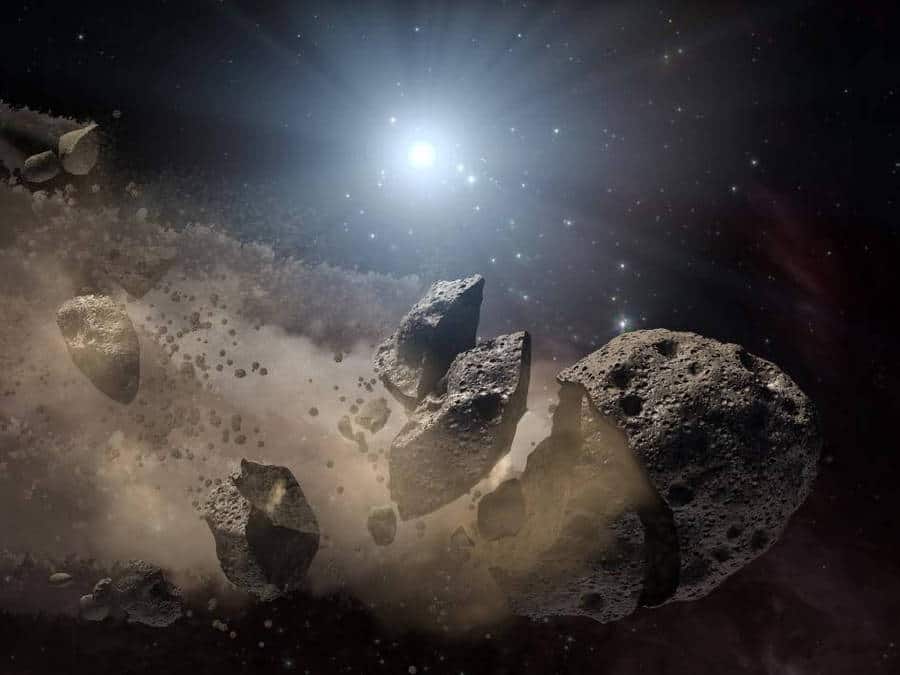Dino-killing asteroid ended photosynthesis for up to two years
3 min read
New research suggests it was a very cold, very dark couple of years on Earth after the asteroid strike that killed off dinosaurs 66 million years ago. Indeed, so much soot from wildfires was pushed into the atmosphere that the planet was thrust into photosynthesis-ending darkness for up to two years, researchers report.
The new study, published in Proceedings of the National Academy of Sciences, scientists used a sophisticated computer model to look at how Earth’s climate changed after the 10-kilometer-wide asteroid slammed into what is now the Yucatan Peninsula. They wanted to know why some species died while other were able to hang on. (Researchers reckon about three-fourths of all species disappeared from the planet, with those in the oceans especially hard hit.)
In addition to triggering earthquakes, tsunamis and volcanoes, the strike sent vaporized rock high above Earth’s surface, where it condensed into particles known as spherules. As these fell back to Earth, friction would have heated them and sent tiny fireballs around the globe, broiling the planet’s surface.
Said scientist Charles Bardeen, who led the study: “The extinction of many of the large animals on land could have been caused by the immediate aftermath of the impact, but animals that lived in the oceans or those that could burrow underground or slip underwater temporarily could have survived…. Our study picks up the story after the initial effects — after the earthquakes and the tsunamis and the broiling. We wanted to look at the long-term consequences of the amount of soot we think was created and what those consequences might have meant for the animals that were left.”

Their simulations showed that soot heated by the Sun was lofted higher and higher into the atmosphere, eventually forming a global barrier that blocked the vast majority of sunlight from reaching Earth’s surface.
Said Owen “Brian” Toon, a researcher at the University of Colorado Boulder: “At first it would have been about as dark as a moonlit night.” Photosynthesis would have been impossible for more than a year and a half, and the darkness would likely have had its greatest impact on phytoplankton, which underpin the ocean food chain. With these low-level organisms gone, the entire food chain would have been disrupted, crashing many species of marine life. Meanwhile, average temperatures at Earth’s surface would have dropped, by about 50 degrees Fahrenheit (28 degrees Celsius) over land and 20 degrees Fahrenheit (11 degrees Celsius) over the oceans.
Researchers acknowledged their simulations could still be improved upon. “An asteroid collision is a very large perturbation — not something you would normally see when modeling future climate scenarios… So the model was not designed to handle this and, as we went along, we had to adjust the model so it could handle some of the event’s impacts, such as warming of the stratosphere by over 200 degrees Celsius.” Bardeen and team think their work could help other researchers simulate major climate events such as a so-called “nuclear winter” resulting form a nuclear war. “The amount of soot created by nuclear warfare would be much less than we saw during the (asteroid) extinction,” Bardeen said. “But the soot would still alter the climate in similar ways, cooling the surface and heating the upper atmosphere, with potentially devastating effects.”



